When it comes to city passes and travel cards, it’s usually fairly easy to figure out whether they would be worth it for you or not. For things like the Paris Pass or London Pass, they have a list of the most popular attractions and how much they cost, right there for you to see. The Swiss Travel Pass, however, is shrouded in mystery, or at least it was until I spent several days tracking down all of the prices and benefits.
A great many of the visitors and commenters on my popular page about where to go in Switzerland on a short visit are wondering whether the Swiss Travel Pass is a good deal. Embarrassingly, I’ve always had to answer that I found the pass too confusing to confidently advise people on. Now that has all changed, after literally days of research.
Note: This article was last updated in February, 2024.
Disclosure: This is a reader-supported website and some of the links are affiliate links where a small commission is paid to help keep this site going, but the cost to visitors is the same. The Swiss Travel Pass seems quite expensive at first, so it felt like it might be hard to get your money’s worth out of it. As it turns out, it’s pretty easy to get good value, and it’ll be a good deal for many visitors.
New in 2024
Prices increased an average of 5.9% from 2023 on the Swiss Travel Passes, but the Half Fare Card remains at CHF120, which is where it’s been for many years. Train fares in the country increased by similar percentages so the value is basically unchanged. There were no other notable changes to service or the included attractions and train routes.
>>>Buy the Swiss Travel Pass online
Where to stay in Interlaken and the Lauterbrunnen Valley
Since most people reading this will be visiting the Interlaken area and I get so many questions about it, I decided to write a detailed guide on which area to stay in while visiting this area.
>>>Where to stay in Interlaken or the Lauterbrunnen Valley in Switzerland
I included many huge photos in that post so readers will be able to get a better idea of what each place looks like and they are worth a look by itself.
>>>Lucerne or Interlaken: Which to visit and how long to stay?
The article just above will help you decide on how long to spend in each of Switzerland’s two best tourist areas.
Are you 100% sure where you want to go in Switzerland? This should help
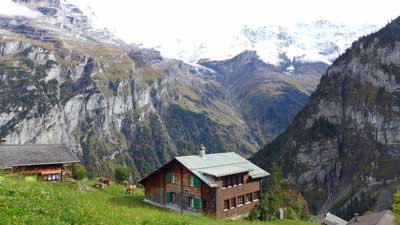
Zurich and Geneva are pleasant but dull. The good news is that Switzerland is packed with amazing sights and none of them are the big cities. If you aren’t 100% locked in yet, please read the article below and I think you’ll enjoy it.
Is the Swiss Travel Pass a good deal? Here's the short version

The bottom line is that the scenery, train journeys, and cable car rides in Switzerland are stunning and not found anywhere else in the world. They are also quite expensive if you pay for them one at a time. So no matter how you visit Switzerland, you are going to be paying quite a bit, or skipping the absolute best things that you’ve come there to see.
With good planning it’s quite easy to get great value out of a Swiss Travel Pass, but it might be a poor choice for those who don’t like to plan ahead. You can easily do a scenic train ride and a cable car in the same day, and still have time to do a scenic hike in the process.
First class or second class? Good news for most people
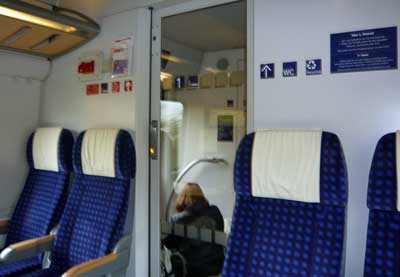
That said, Swiss Trains are literally the nicest in Europe and even the Second Class seats and carriages are nicer and roomier than trains in neighboring countries. The First Class seats are larger and nicer with only 3 across the cabin instead of 4, but honestly Second Class is perfectly comfortable for almost everyone.
Again, First Class on European trains like this is generally popular with business travelers where the company is paying and they need to get work done during the ride, and also senior citizens who don’t want to worry about a carriage full of backpackers. For most of the rest of us, Second Class is more than comfortable enough and the seat width and legroom compare to business-class airline seats. I’m a big and tall guy and I almost always travel in Second because it’s plenty comfortable enough and all the seats arrive at the same time anyway.
The longer you'll be in Switzerland, the better deal a Swiss Travel Pass will be
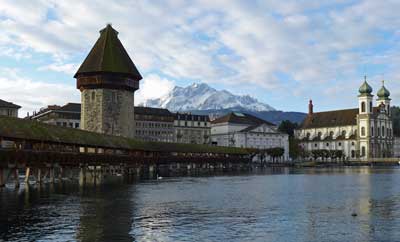
In other words, if you are staying 5 days or fewer, you have to do the math to determine your best option. But if you are spending even 6 or 7 days in Switzerland then the 6-day or 8-day Pass is almost guaranteed to be a great deal and your best choice. Once you have a Swiss Travel Pass you’ll absolutely love the ability to just hop on any train (excellent trains, always on time) and most boats and cable cars without having to worry about the cost. The per-day cost of an 8-day Pass even if you only use 6 of those days is about CHF65, and Switzerland is filled with amazing train rides and boats and cable cars that can get you that much value before noon each day.
Schilthorn (50% discount) and Jungfraujoch (25% discount) are cheaper with a Swiss Travel Pass
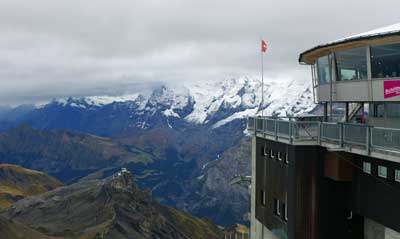
Both of those peak experiences are extraordinary and different from each other. Even so, compared to Jungfraujoch, Schilthorn is also faster and more comfortable on the way up and down. You can enjoy an excellent visit to Schilthorn in 4 hours or so (or a bit longer if you eat at the spinning Piz Gloria restaurant at the top), while a visit to Jungfraujoch requires closer to 6 hours.
NOTE: Schilthorn closes for maintenance for a week or two in late November most years.
Consider the Swiss Half-Fare Card instead
If you AREN’T going to be doing two or more of the long (and expensive) scenic train trips, you will get much better value out of the Swiss Half-Fare Card, which is explained a bit below.
Mt Rigi, near Lucerne, is 100% covered by the Swiss Travel Pass
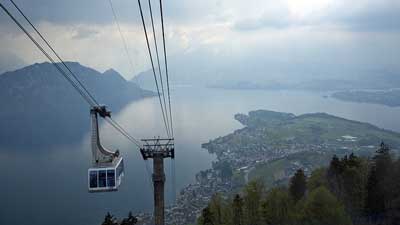
Is a Swiss Travel Pass right for you?
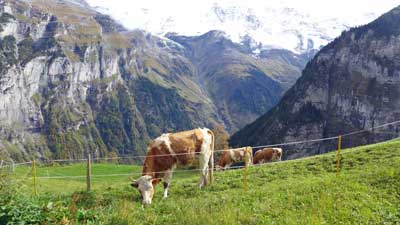
Most people only visit Switzerland for 5 or 6 days at most, so the 3-day and 4-day passes are the ones to focus on. But if you are staying for 8 days or more, those longer passes are almost certainly a great deal for you.
Long story short, if you plan on doing 2 of the more expensive scenic trains and the Jungfraujoch railway or the Schilthorn cable car, then the pass will save you money. Switzerland is expensive, but it’s worth it, and the travel pass can help make it a bit more affordable.
What the Swiss Travel Pass includes
- Free rail travel on normal trains and most scenic trains
- Discounted travel (about 50%) on popular tourist mountain trains
- Discounted travel (about 50%) on popular tourist cable cars
- Free travel on public transport in 75 towns and cities
- Free entry to around 500 museums in Switzerland
The Swiss Travel Pass covers the fare on the most popular scenic and panoramic trains. You can choose a normal seat in a regular carriage for no additional cost, but there is a supplement of CHF8 to CHF49 for a reserved seat in one of the special panorama carriages on these routes.
Prices of the 2024 Swiss Travel Pass
1st Class
- Adult 3-day Pass: CHF389
- Youth (4 to 25) 3-day Pass: 274
- Adult 4-day Pass: 469
- Youth (4 to 25) 4-day Pass: 330
- Adult 6-day Pass: 602
- Youth (4 to 25) 6-day Pass: 424
- Adult 8-day Pass: 655
- Youth (4 to 25) 8-day Pass: 469
- Adult 15-day Pass: 723
- Youth (4 to 25) 15-day Pass: 512
2nd Class
- Adult 3-day Pass: CHF244
- Youth (4 to 25) 3-day Pass: 172
- Adult 4-day Pass: 295
- Youth (16 to 25) 4-day Pass: 209
- Adult 6-day Pass: 379
- Youth (16 to 25) 6-day Pass: 268
- Adult 8-day Pass: 419
- Youth (16 to 25) 8-day Pass: 297
- Adult 15-day Pass: 459
- Youth (16 to 25) 15-day Pass: 328
Swiss Travel Pass Flex
This version costs a bit more, but you don’t have to use the travel days consecutively. It’s a great option for anyone who won’t be taking longer train rides each day.
- Adult 3 Flex days in 1 month (1st Class): CHF445
- Adult 3 Flex days in 1 month (2nd Class): 279
- Adult 4 Flex days in 1 month (1st Class): 539
- Adult 4 Flex days in 1 month (2nd Class): 339
- Adult 6 Flex days in 1 month (1st Class): 644
- Adult 6 Flex days in 1 month (2nd Class): 405
- Adult 8 Flex days in 1 month (1st Class): 697
- Adult 8 Flex days in 1 month (2nd Class): 439
- Adult 15 Flex days in 1 month (1st Class): 755
- Adult 15 Flex days in 1 month (2nd Class): 472
Where to buy the Swiss Travel Pass
The Swiss Half-Fare Card – A better option for many visitors
Far less confusing than the Swiss Travel Pass, you can instead get a Swiss Half-Fare Card, and it will be a better deal for many travelers. The price is lower and it’s much easier to do the math, and the discounts are greater on some things as well.
- Swiss Half-Fare Card for 30 days: Adults – CHF120 or US$129
What you get:
Those who buy the Swiss Half-Fare Card will get 50% discount on all trains, buses, and boats in Switzerland for up to 30 days, as well as 50% off all public transportation in 75 cities and towns.
>>>Buy the Swiss Half-Fare Card
Why the Half-Fare Card is a better deal for many
While the Swiss Travel Pass is a great deal for those doing many of the expensive scenic journeys and mountain sights within a few days, it’s not good value for those who are doing fewer of the expensive trips and/or those who are staying longer. Also, the Swiss Travel Pass only provides a 25% discount on the amazing Jungfraujoch Railway, which costs between CHF120 and CHF224 return depending on your starting point, while the Half-Fare Card provides a 50% discount.
The math is simple as well. You can just add up the cost of the trains, boats, and buses you’ll be taking while in Switzerland, and if the total is more than CHF240 or so, the Half-Fare Card will save you money.
Example itinerary:
- Zurich to Interlaken train (2nd Class): CHF50
- Schilthorn Cable Car: CHF112
- Jungfraujoch railway from Interlaken: CHF205
- Interlaken to Lucerne train (2nd Class): CHF33
- Mt Rigi roundtrip from Lucerne: CHF84
- Engelberg (near Lucerne) to Mt. Titlis Cable Car: CHF92
- Lucerne to Zurich train (2nd Class): CHF25
Total per person: CHF601
Total with Half-Fare Card (including price of card): CHF420.50
It would be tough to do all of those things in 4 days, although it is possible. If you bought a 4-day Swiss Travel Pass here is how it adds up:
4-Day Swiss Travel Pass: CHF259
Supplements for Schilthorn, Jungfraujoch, and Mt. Titlis: CHF203.25
Total cost: CHF462.25
Bottom line on the Swiss Half-Fare Card
Since the Half-Fare Card lasts 30 days and provides a larger discount on Jungfraujoch, it is better value for visitors who want to include that scenic top-of-Europe rail journey on their trip. The discounts also add up more quickly on Schilthorn and Mt. Titlis trips, just to name two examples, and you don’t have to take many longer rail journeys to get value out of the Half-Fare Card.
Swiss Saver Day Pass (A one-day unlimited travel pass)
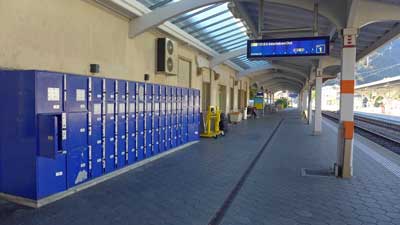
If you buy the Saver Day Pass at least 21 days in advance (and up to 60 days in advance) the 2023 cost is:
- 2nd Class (with Half Fare Card): CHF29
- 1st Class (with Half Fare Card): CHF82
- 2nd Class (with no Half Fare Card): CHF52
- 1st Class (with no Half Fare Card): CHF97
Once you research the normal cost of Swiss train fares you’ll see that the above prices are a very good deal for anyone riding more than 150 kilometers or so in a day. If you are just going, for example, from Zurich to Lucerne or Interlaken on a day, it’ll be cheaper to just buy that ticket individually. But if you are going from Geneva or Montreux to Interlaken or Lucerne then the Saver Day Pass will be much cheaper. Better still, you can use a Saver Day Pass to go from Interlaken to Geneva and back on the same day on the Goldenpass line and returning on the faster train through Bern, and it will still all be included for free.
If you don’t buy a Saver Day Pass at least 14 days in advance it’s more expensive, and if you only buy 1 to 3 days in advance it’s VERY expensive, so the key is to buy early. This is all confusing, but the Saver Day Pass should be a great option for many people only in Switzerland for one to three days.
Popular Swiss panorama scenic trains
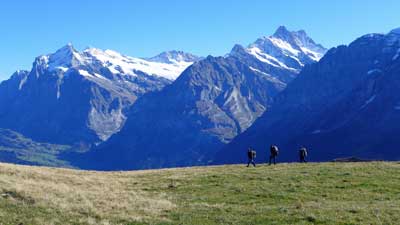
- Glacier Express
- Route: Zermatt to St. Moritz
- Train type: Panorama
- Journey time: 8 hours 3 minutes
- Distance: 291km
- 1st Class fare: CHF272
- 2nd Class fare: CHF159
- Compulsory seat reservation fee: CHF44 or 49
- Supplement for Swiss Pass holders: 13 to 33 for panorama carriage
- Bernina Express
- Route: Chur to Tirano and Lugano
- Train type: Panorama and bus
- Journey time: 4 hours 13 minutes and 3 hours 10 minutes
- Distance: 148km and 90km
- 1st Class fare: CHF113
- 2nd Class fare: CHF66
- Compulsory seat reservation fee: CHF32
- Supplement for Swiss Pass holders: 10 to 14 for panorama carriage
- GoldenPass Line
- Route: Lucerne to Montreaux
- Train type: Panorama
- Journey time: 5 hours 8 minutes
- Distance: 191 km
- Prestige Class fare: CHF131
- 1st Class fare: CHF96
- 2nd Class fare: CHF56
- Supplement for Swiss Pass holders: 8 to 15 for panorama carriage
- Gotthard Panorama Express (formerly Wilhelm Tell Express)
- Route: Lugano or Locarno to Lucerne
- Train type: Panorama and boat
- Journey time: 5 hours 21 minutes
- Distance: 182 km
- 1st Class fare: CHF164
- 2nd Class fare: CHF135
- Supplement for Swiss Pass holders: 39 to 49 for panorama carriage
- Swiss Chocolate Train
- Route: Montreux to Broc round trip
- Train type: Panorama or First Class
- Journey time: X hours X minutes
- Distance: 82 km
- 1st Class fare: CHF99
- 2nd Class fare: 89
- Supplement for Swiss Pass holders: 39
Popular Swiss scenic and theme trains
The scenic trains below are also extremely popular as sightseeing journeys rather than just as transportation, but can be used as both.
- Jungfraujoch round trip
- Route: Interlaken to Jungfraujoch
- Train type: special mountain train
- Journey time: 4 hours 41 minutes, round trip, plus time on top
- Distance: 73 km
- 1st Class fare: N/A
- 2nd Class fare: CHF224
- Supplement for Swiss Pass holders: 147 (so, a saving of CHF77)
- Gornergrat Railway
- Route: Gornergrat Railway
- Train type: Cog railway
- Journey time: 44 minutes return
- Distance: 10 km
- 1st Class fare: N/A
- 2nd Class fare: CHF90
- Supplement for Swiss Pass holders: 45
- Rigi round trip
- Route: Lucerne to Rigi
- Train type: Cog railway
- Journey time: 3 hours 25 minutes, plus time at the top
- Distance: 58 km
- 2nd Class fare: CHF78
- Supplement for Swiss Pass holders: None (this one is free with the pass)
- Mt Rigi Excursion (one-way and walk down)
- Route: Lucerne to Mt Rigi
- Train type: cogwheel train and/or cable car
- Journey time: 45 minutes up
- 1st Class fare: N/A
- 2nd Class fare: 49
- Supplement for Swiss Pass holders: 0
- Lotschberg Mountain Route and Centrovalli
- Route: Bern to Locarno
- Train type: Narrow gauge
- Journey time: 4 hours 40 minutes
- Distance: 212 km
- 1st Class fare: CHF158
- 2nd Class fare: CHF90
- Supplement for Swiss Pass holders: 5
- Jura round trip (Watchmaking Tour)
- Route: Neuchatel through Jura
- Train type: Regular
- Journey time: 3 hours 0 minutes
- Distance: 143 km
- 1st Class fare: CHF168
- 2nd Class fare: CHF108
- Supplement for Swiss Pass holders: 0
- Pre-Alpine Express
- Route: St. Gallen to Lucerne
- Train type: Regular
- Journey time: 2 hours 15 minutes
- Distance: 146 km
- 1st Class fare: CHF83
- 2nd Class fare: CHF47
- Supplement for Swiss Pass holders: 0
- Jura Foot Line
- Route: Basel to Geneva
- Train type: Regular
- Journey time: 2 hours 40 minutes
- Distance: 248 km
- 1st Class fare: CHF132
- 2nd Class fare: CHF75
- Supplement for Swiss Pass holders: 0
Popular Switzerland cable car rides
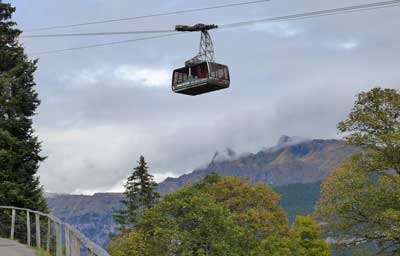
- Schilthorn
- Route: Stechelberg (Lauterbrunnen) to Schilthorn
- Train type: cable car
- Journey time: 1 hour
- 2nd Class fare: CHF108
- Supplement for Swiss Pass holders: 54
- Engelberg to Mt. Titlis cable car
- Route: Engelberg to Mt. Titlis
- Train type: cable car
- 2nd Class fare: CHF96
- Supplement for Swiss Pass holders: 46
The Swiss Travel Pass also includes free museum admission, but…
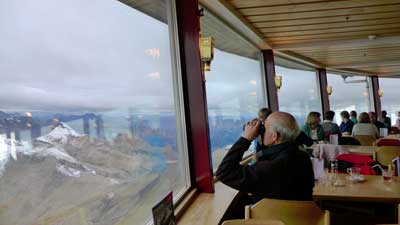
The problem is that the museums are only free on valid travel days, and almost no one would visit more than one or two museums with a Swiss Travel Pass. The trains and cable cars are so expensive that the pass gives very good value to cover those, so you don’t want to waste precious sightseeing time walking through a museum that only costs CHF10 anyway.
In other words, calculate the value of a Swiss Travel Pass on the travel savings only, and if you visit a museum here or there, then great. Most people are better off trying to squeeze in an additional train ride each day, and ignoring the museums. Switzerland is all about the outdoor scenery. As nice as the museums may be, they are not why you are there.
The pass includes free public transport in most Swiss cities
Similar to the free museum part of the offer, it’s best to ignore or minimize the value of free public transportation. It could be helpful in Zurich, but in most other Swiss tourist towns you won’t need much public transport. In fact, in Interlaken, each hotel or hostel guest automatically gets a card for free public transportation within the town (including between the two train stations).
So you might use a ride or two each day on public transport, but that won’t add up to much in terms of value of your Swiss Travel Pass.

Great blog, but although the title has been updated to 2019, you are still saying that Schilthorn is included in the STP. Although that is true in 2018, it appears to no longer be included in 2019 🙁
One feature of the STP (vs 1/2 fare, or individual tickets) that I think makes it more valuable even if it ends up being $10-20/day more expesive is the ability to hop on and off trains at will. A trip is expensive, and not something people do often, so every minute you save is an extra minute to enjoy your trip. Besides avoiding lines, kiosks, and fumbling around with your credit cad, not buying tickets allows you to hop off at any time for an unplanned rest stop, have a meal, snack or drink, have a look around, and get on the next train to continue your itinerary. There are many beautiful places to enjoy, maybe not worthy of being a destination, but very enjoyable for a quick look around.
Frank,
Thanks for the comments and I am also a fan of getting a Swiss Travel Pass even if the savings are a close call. My main thing is that when you have the pass you’ll almost certainly find more things to do with it, including hopping on any train as you mentioned.
By the way, I’m looking at the Schilthorn website right now and it still says the Swiss Travel Pass gets you free on Schilthorn in 2019. It says the “Swiss Card” gives you a 50% discount, but just below that it says that the Swiss Travel Pass is fully covered. -Roger
Thank you Roger! This is very helpful. I forgot to task – We will probably take a train from Interlaken to Verona Italy. Will the Swiss Travel Pass cover any of this cost? How do I use the pass for Swizterland, but pay for the portion in Italy if it’s all the same train ride?
Darren,
You are welcome. Yes, if your Swiss Travel Pass is valid on the day you leave the country, you can use it to reach the last station within Switzerland, which should be pretty near the border. When you get to Switzerland and decide which train you want to take to Italy you can go to a train station and mention your pass and buy a ticket for the Italy portion of your journey. It may be from the last station in Switzerland or it may be from the first station in Italy. It’s pretty common so it should be easy. -Roger
Roger,
Thanks so much for the article. I will read it multiple times. Can I get your advice on the best travel pass for us? In September 2019 we plan to:
– Arrive in Zurich in the morning. Take train to Lucerne.
-2 nights in Lucerne. 1.5 days to see Lucerne.
— Walk the old town. Go to Rosengarten art museum. Visit either Mt Rigis or Mt Pilatus. Haven’t decided yet.
-Travel to Wengen. 3-4 nights in Wengen spent mostly hiking around Wengen, Murren and Grindlewald. I assume we will use lifts and cog wheel trains often. If weather is good will go to Schilthorn or Jungfraujoch, haven’t decided yet.
– Train to Italy to continue vacation in the Dolomites.
Between the Swiss Travel Card, Half Fare Card, and Bernese regional card, what travel passes do you recommend? Any other suggestions?
thank you for all the advice and expertise!
Darren
Darren,
Your plan sounds really good. My advice would be to get the 8-day Swiss Travel Pass and then take advantage of as many of the included things as you can. Since Mt. Rigi and Schilthorn are both fully included (and both fantastic) it is best to do those rather than the expensive alternatives. Even in 6 days (or even in 5 days) you’ll be able to get a LOT of use out of it because there are so many trains and boats and cable cars that are included that even at half price would be more expensive. If you decide to only stay 5 nights in Switzerland it’s probably better to buy a 4-day card and not activate it until your first full day in Lucerne. You’ll find plenty to do in Lucerne for a half day, even if you have to pay for something small. As you’ve noticed, the Swiss Travel Passes seem very expensive on the surface, especially if you won’t be there for all of the days you’d be buying. But between Mt Rigi and Schilthorn it will save you around CHF200, and all of the other trains and boats and cable cars you’ll want to ride will cost a small fortune without the Pass.
The Bernese Card is good if you are only staying in that area, but it wouldn’t cover quite a few things you’ll want to do in Lucerne and getting around Switzerland. Let me know if you have any other questions. -Roger
Hi Roger
I am so impressed with the good advice that you give to travellers. It would have been very helpful for me if I had found your site much sooner. However, I have already booked accommodation. This is our proposed itinerary:
3rd January, arrive Zurich and stay overnight.
4th January, activate Swiss Pass, half day Zurich sights and travel to Lucerne by train early afternoon, some sightseeing if light enough, overnight Lucerne.
5th January, Mt Rigi round trip, Lucerne sightseeing, overnight Lucerne.
6th January, am Lucerne sightseeing (or Bern?), mid-afternoon train to Interlaken, overnight Interlaken.
7th January, Jungfraujoch round trip, overnight Interlaken.
8th January, early morning trains from Interlaken to Chamonix-Mount Blanc, overnight Chamonix.
9th January, morning Chamonix-Mount Blanc sights, afternoon trains to Zermatt, overnight Zermatt.
10th January, early morning Glacier Express from Zermatt to St Moritz, overnight Pontresina.
11th January, Bernina Express from Pontresina/St Moritz to Tirano and on to Milan.
Would you mind giving your opinion on whether it would be a good option for us to buy a Swiss Travel Pass.
Thank you
Jennette,
Your plan looks fantastic. With all the train rides you’ll be taking it seems pretty clear that the Swiss Travel Pass for 8 days is your best option. If you do that math the Pass can seem expensive for the 3-day or 4-day version, but if you are actually staying 8 days it’s only CHF399, so CHF50 per day. You’ll probably get that much use out of a Pass by noon each day.
Another person just commented that they saw a promotion for 2 extra days. You wouldn’t get much use out of that, but I also saw 20% off a First Class pass, so that’s something to think about. The different companies that sell the Swiss Travel Pass all seem to offer promotions this time of year because sales are so slow, so hopefully you can get an even better deal that usual. Let me know if you have any other questions. -Roger
Hello Roger,
I was browsing internet for the Swiss Travel pass options and was trying to match a travel pass with my travel itinerary.
I am traveling with my father, wife and son to Switzerland in June.
I was extremely lucky to find this blog of yours where you have explained very well on how to choose a travel pass based on itinerary.
I am almost certain that I have to take Swiss Travel Pass for 8 days. But I needed someone to also take a look at my plan and advice if I am doing it correctly or not.
Following is my plan:
Day 1
Arrive at Zurich
Zurich -> Buoches
Stay at Buoches for next 2 days
Day 2
Mt Pilatus Excursion
Day 3
Mt Titlis Excursion
Buochs -> Wengen
Day 4
Jungfrau Excursion
Wengen -> Jungfrauoch
Jungfrauoch -> Kleine Scheidegg and walk down the rest to Wengen
Day 5
Mt Schilthorn Excursion
Wengen -> Stechelberg.
Stechelberg -> Schilthorn
Schilthorn -> Gimmewald
Gimmewald -> Murren and hike down to Lauterbrunnen
LautterBrunnen -> Wengen
Day 6
Hiking day
Eiger Trail hike
Wengen -> Eigergletscher
First to Grossenegg Hike
Wengen -> First
Day 7
Wengen -> Zermatt
Zermatt -> Sunnegga
Sunnega -> Zermatt
Day 8
Matterhorn Excursion
Zermatt -> Gornergrat
Gornergrat -> Zermatt
Day 9
Plan for hiking across 5 lakes.
Day 10
Zermatt -> Chur (Glacier Express)
Chur -> Zurich
Now if I take 8-day travel pass, I need to start using that from Day 3 to cover the GEX ride.
But for Day 1 to Day 3, what options will I be having ?
Also I was checking the Euro Rail site for the same. I came across the offers where we can take 8 day Swiss Travel Pass with 2 extra days free. Do you know anything about this ?
Will be waiting for your reply and suggestion.
Thanks in advance !!
Regards
Shubhadeep
Shubhadeep,
I’m glad you found this site as well. Your trip looks amazing. I definitely agree that a 8-day Swiss Travel Pass will be your best option. I’m not seeing the 2 bonus days promotion on Eurail.com or the other main sites I checked, but I’m seeing 20% off First Class passes. I think that promotion you are seeing is legit though, as the rail pass companies always seem to run specials in November and December. Sometimes they are good only for trips through the following March, but last year I think it was available for any date, so it was an excellent deal. Needless to say, if you can get that it solves your problem.
You’ll also find more uses for the Swiss Travel Pass once you get there. You don’t seem to be scheduling too much, at least for many of your days, and since so many things are free with the pass you’ll probably be able to take an extra boat ride or train ride or cable car ride here and there. It looks like you’ve really done your research so I don’t have anything else to add. Let me know if you have any other questions. -Roger
Hi Roger,
First off – awesome blog! I will be doing my first solo trip to Europe (all the way from land down under (a little daunting but exciting!)) and as this was a bit of a hasty decision I am still a bit unsure of my itinerary in Switzerland but will be open to suggestions.
My initial plan is:
13 Dec: Arrive in Zurich via air – transfer to Bern
13-15 Dec: Bern (2 nights)
15 Dec: Bern to Lucern
15-19 Dec: Lucern (4 nights)
19 Dec: to Zurich where I will depart Switzerland via air.
After doing some reading/research, I plan to do one if not more of the scenic trains, however using Lucern as my base. I want to be able to do some mild hikes, walks – basically to experience views of Swiss Alps and villages. Will the Swiss Travel Pass be of good value? Also, does the Swiss Travel Pass cover train from Zurich Airport to Zurich city centre and then transfer to Bern?
Any guide/info/advice will be highly appreciated!
Thank you!
Amanda,
It’s exciting to do a trip on short notice like this. As you might know, you’ll be arriving just at the beginning of the snow/skiing season, which typically starts on 15-December. If you haven’t yet at least scanned my main article on where to go in Switzerland, you might want to do that. Bern is a charming and photogenic small city, but I’d recommend keeping it for a day trip if the weather in the mountains is bad. I’d stay in the Interlaken area for at least two nights, if not three.
Since your trip is 7 days you’d need to get an 8-day Swiss Travel Pass, which I do think would be good value for you. The price of CHF398 comes out to about CHF56 per day for your 7 days, and it’s VERY easy to get that much use out of a pass if you are moving around a lot and seeing the famous sights. You can even use it to go up Mt. Rigi and the lake cruise in Lucerne, and to go all the way up Schilthorn in Interlaken, and those two things are close to CHF200 if you pay as you go. I just noticed that Schilthorn is closed for maintenance now, but it reopens on 7-December.
Those scenic train rides are quite expensive, especially if you go out in the morning and come back in the same day, so you can save CHF200 in a day doing that. If you were only staying for 5 or 6 days it might be a close call, but for 7 days I’d say it’s definitely your best option. And yes, the Swiss Travel Pass will cover your train from the airport station, as it’s just another station in the system. Let me know if you have any other questions. -Roger
Hello Roger!
Your blog is fantastic. So much helpful information. I really appreciate the effort you put into the research and publication. To top it you’ve been responsive to inquiries like mine for so long!
We are planning a trip with a group to Switzerland next month. It’s all a bit short notice and not a great amount of time to plan. We have all been a little overwhelmed by the information on the Swiss Pass and cannot agree on our best course of action. Here is our itinerary, we are open to any suggestions on destinations, hot spots, and the best means of transport.
Day 1 – Arrive in Zurich around 11am; Train to Lucerne then to Vitznau (Staying in Vitznau Day 1 through Day 6. Looking for scenic trains, cable cars, and boat rides to take in that time frame)
Day 6 – Train from Lucerne to Geneva
Day 7 – Train from Geneva to Zurich
Day 8 – Depart Zurich to return to the State.
We have had debate on the Swiss Pass, the Flex Pass, the Half Fare Card, and the number of days to purchase for. We also have concerns about reservations. If you purchase a Swiss Pass would you still reserve seats for the 3 main train rides between major cities?
Thank you for your help and suggestions!
Sarah,
I’m always happy to hear that people find this helpful. First off, you might want to at least scan my main article on where to go in Switzerland. It would be a shame to spend 7 or 8 days in Switzerland and not see the top sights in the Interlaken area. Those rides from Lucerne to Geneva and to Zurich will have fantastic scenery, but the cities themselves are kind of dull by comparison.
For an 8-day stay you almost certainly will get the best value out of a Swiss Travel Pass. The shorter ones are pretty expensive on a per-day basis, but for 8 days it’s a great bargain and it’ll save you a fortune because so many things are covered. If you have a Swiss Travel Pass you can just hop on any train and find a seat. When the ticket person comes through your carriage you’ll just show them your valid Pass and they will scan it and that’s it. Generally speaking, the only trains in Switzerland that are sometimes full are the morning departures between the big cities. If you get on a train after 9am or so it will usually be half empty, and seat reservations are not required so the worst case scenario is you’d stand up until someone got off at the next stop.
The only trains that require reservations are the special panoramic carriages on the specific scenic trains like the GoldenPass and the Glacier Express. Even on those trains most of the carriages are the normal ones and you don’t need a reservation for them. Let me know if you have any other questions. -Roger
Dear Roger,
Thank you so much for your time and help you are providing to travelers here!
We are planning to visit Switzerland in January with my husband and a daughter. I am now planning our journey. We will have 3 days I am thinking about visiting Bern, and then Lucern. From Lucern I have two options:
1. Go to Rigi summit and then visit Titlis to have a walk in Titlis cliff walk. OR
2. Visit Interlaken and from there go to Grimmelwald.
My questions are:
1.Which one would you recommend more?
2.What is the best way to get in those destination.
3.Which railcard it is better to buy?
4. How and what to make to see the best during those one of two trips.
Will be looking forward to hearing from you,
Best wishes,
Lika
Lika,
I discuss these options in detail in my main article about where to go in Switzerland. I’d put Interlaken at the top of your list, and include Lucern if you have enough time, and/or Bern if you really want to visit a Swiss city. By the way, next to the city of Interlaken is the amazing Lauterbrunnen Valley, and that is where all the best scenery is. There is a tiny village on one side of the valley called Gimmelwald, and a small town on the other side of the valley called Grindelwald. They are easy to confuse. Gimmelwald is unlike anything you’ll ever see anywhere else and I highly recommend it. But if you prefer a charming ski town then Grindelwald is a great option.
Getting around by train is best and the trains go everywhere you’ll want to go. The trains are also famously punctual, and also expensive. The Half Fare Card is great value for most visitors and probably your best option. But depending on the places to plan on going, the Swiss Travel Pass might be even better. You’ll find my best tips in the article at that link. Let me know if you have any other questions. -Roger
Hi Roger, Your article certainly has some great information, but I am still confused about which Swiss rail pass will suit me.I would appreciate your advise for my up coming holiday.
Day 1 Lugano to Lucerne (Gotthard Panorama Express)
Day 2 Mt Pilatus
Day 3 Day trip to Interlaken and Grindelwald.
Day 4 Golden line to Montreux
Day 5 Chocolate train
Day 6 sightseeing in Montreal’s
Day 7 train to Geneva to fly to UK.
Am I better off with Swiss pass, half price card, or Tell pass and Geneva pass?
Regards Wendy West
Wendy,
Sorry about the slow response by the way. My best guess is that the 8-day Swiss Travel Pass would be your best choice because you are taking several of the more expensive train rides. If you ONLY did the things on this list it might not be a big savings, but once you have the Swiss Travel Pass you can do quite a few more things because so many things are included. For example, when you visit Interlaken you can take the Schilthorn cable car attraction instead of visiting Grindelwald, or in addition to it. Schilthorn is one of the best attractions in Switzerland and the CHF105 fare is totally included with the Pass.
Also, when in Lucerne you might instead take the lake cruise and then go up Mt. Rigi instead, as both of those are totally covered, and Pilatus is only a discount. In other words, if you have the Pass you can do many more things that you probably wouldn’t do if you only had the Half Fare Card. That said, you’d really have to add up the costs of the things you’d do and see which is the best option. Even if it’s close I would do the Pass if you can because it allows so much more freedom. Let me know if you have any other questions. -Roger
Hi Roger,
I’ve been reading all of your replies to the comments and I’m really impressed! I have a question itinerary wise. My sister and I will be travelling from Milan, Italy through Switzerland in January with the intention of doing either the Berina or Glacier express. Neither of us ski. We were considering getting the three or four day Swiss Pass. We want to fit in as much as possible to make this good value. After Switzerland we plan to go to Strasbourg in France. What would you suggest as a sample itinerary?
Cam,
This sounds like a really lovely trip at that time of year. It’s hard to say which of those trains would be better. The Glacier Express should have more snow visible because that’s sort of the whole point of it, but the Bernina Express should also be extremely scenic with plenty of snow in January. Probably the biggest factor I’d consider is that from Milan you can reach Lugano to start the Bernina Express in a bit over an hour, or you could take a few hours and make a short stop in Lake Como for a look around on your way. Lake Como is very quiet in winter, but it’s still really lovely to see. But from Milan to St. Moritz to start the Glacier Express it takes about 6 hours, so you’d have to spend a night in St. Moritz before you started. That’s not a bad thing to do, but it does add another day.
The Bernina Express is much easier and faster to reach, so if it were me I’d go that route. You could then stay in Chur that night and the next morning head to Interlaken for 2 or 3 nights before taking another train to Strasbourg. In the Interlaken area the mountain attractions including Schilthorn and Jungfraujoch go year round, and all the mountains should be covered in snow in January. There are some ski areas, but there are many people who come just to see the amazing winter views. You can get more information about those thing in my main article about where to go in Switzerland on a short visit. Let me know if you have any other questions. -Roger